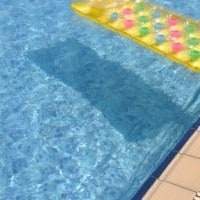Is a Swimming Pool Enclosure / Fence Enough to Keep Child Safe to Prevent Drowning Incidents?

Children are at risk for drowning incidents any time that children are near or in a swimming pool area or similar area like a lake, pond, water park, etc. . . . As for residential swimming pools, it is important that pool owner and supervising adults keep a swimming pool out of the reach of children. Certainly, a swimming pool owner, child care provider, and others watching child should following the applicable state and local laws; however, merely following the law will not prevent some incidents from happening. There really is not substitute for common sense, supervision, or due diligence.
Florida enacted Chapter 515 - Residential Swimming Pool Safety Act as a measure to protect children. Pursuant to Section 515.29, Florida Statutes, a residential pool owner must comply with the following requirements:
515.29 Residential swimming pool barrier requirements.—
- A residential swimming pool barrier must have all of the following characteristics:
- The barrier must be at least 4 feet high on the outside.
- The barrier may not have any gaps, openings, indentations, protrusions, or structural components that could allow a young child to crawl under, squeeze through, or climb over the barrier.
- The barrier must be placed around the perimeter of the pool and must be separate from any fence, wall, or other enclosure surrounding the yard unless the fence, wall, or other enclosure or portion thereof is situated on the perimeter of the pool, is being used as part of the barrier, and meets the barrier requirements of this section.
- The barrier must be placed sufficiently away from the water’s edge to prevent a young child or medically frail elderly person who may have managed to penetrate the barrier from immediately falling into the water.
- The structure of an aboveground swimming pool may be used as its barrier or the barrier for such a pool may be mounted on top of its structure; however, such structure or separately mounted barrier must meet all barrier requirements of this section. In addition, any ladder or steps that are the means of access to an aboveground pool must be capable of being secured, locked, or removed to prevent access or must be surrounded by a barrier that meets the requirements of this section.
- Gates that provide access to swimming pools must open outward away from the pool and be self-closing and equipped with a self-latching locking device, the release mechanism of which must be located on the pool side of the gate and so placed that it cannot be reached by a young child over the top or through any opening or gap.
- A wall of a dwelling may serve as part of the barrier if it does not contain any door or window that opens to provide access to the swimming pool.
- A barrier may not be located in a way that allows any permanent structure, equipment, or similar object to be used for climbing the barrier.
A fence / barrier can prevent many drowning incidents from taking place; however, it should be noted that some children find ways under, over, and through fences because the lure of the water is so great. Small children lack safety awareness and good judgment. Small children do not understand the dangers and risks of being around or in a swimming pool without proper adult supervision. It just seems like play time for a child. Unfortunately, children continue to drown in Florida pools. A recent incident was reported in Lehigh Acres (Lee County) Florida. It was reported by the Gainesville Sun and other news outlets that a 4 year old boy drowned in a Southwest Florida swimming pool. Law enforcement officials reported that the child used a lawn chair to climb over the pool fence. The news report just contained a few details. When a child dies unexpectedly, an autopsy is typically performed to see if there is another explanation for the cause and manner of death other than the drowning incident. See Four Year Old Drowns in Southwest Florida Swimming Pool.
If a child dies from a drowning related incident at a day care center, summer camp, neighbor’s house, or even a relative’s house, there may be a cause of action to pursue even if there was a pool fence in place at the time of the incident. It should be pointed out that under Florida law - a child under the age of 6 years old cannot be held negligent for his or her own actions. Florida law recognizes that children in this age range do not have the ability to properly understand dangers OR act in a reasonably safe manner. For children 6 years and older, the facts and circumstances must be evaluated to determine if there is a viable case or cause of action to pursue. For instance, a case on behalf of a 7 year old is evaluated must differently than that of a 17 year old.
The book titled - The ABCs of Child Injury - Legal Rights of the Injured Child - What Every Parent Should Know - has chapters on Swimming Pool and Water Park Injuries, Theme Park and Attraction Injuries, Day Care Center Injuries, School Injuries and other topics. You can get this book for free at The ABCs of Child Injury.
 Wood, Atter & Wolf, P.A. Home
Wood, Atter & Wolf, P.A. Home

